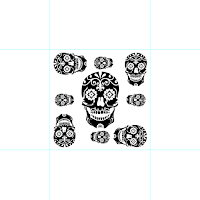Following on from my research at the deep, as a group we began to explore the previous designs on the existing bear cards.
We purchased a number of different themes and discovered the use of different:
- Layout
- Style of illustration
- Colour
- Size of Illustration
All of this information was useful to know and understand when it came to considering the design aspects of our own cards.
As I looked at more of the cards I found that a lot of these designs consisted of large block colours and shape based illustrations. This really isn't something that I'm used to working with and is potentially something that I would struggle with when it came to creating my own illustrations for the cards.
I began to research other card based children's products and looked at how the illustrations different when placed onto the smaller sized medium.
CIGARETTE CARDS
Although not intended for children, the illustrations on the small size of the old fashioned cigarette cards are detailed and full of small marks and a lot of colour. I think this element of them goes to show that the size of the card doesn't matter, the fact that the person holding the card owns it and will hold and study it, is something that I have to keep in mind.
Perhaps it doesn't matter how detailed the illustrations are, but what matters is the story and characters within the card.
POKEMON CARDS
In contrast, these pokemon cards, designed for children, still have a lot of detail and colour within them. The box for the illustrations is even smaller yet they still have a lot of detail and elements within them that add to their quality and use for children.
Much like the bear YOYO cards, the text and divide between the illustrations and information adds to the use of the card and adds interest for the children to learn and discover.
I think the use of character is so important, especially when appealing to children. If the character is relatable, the child is able to connect to it and want to keep it, and in terms of the YOYO cards, hopefully find more of the sea creatures and thus buy more products.
Overall I'm feeling more confident in terms of being able to create the illustrations for the cards. I worried when I saw the shape driven designs of the other cards and felt that I wouldn't be able to create the pieces to a similar standard.
My NEXT STEPS will be to discuss with my group about the style of design that i am considering and get any feedback they may have, along with discussing the potential facts and text that we could include for the back of the cards.


















































